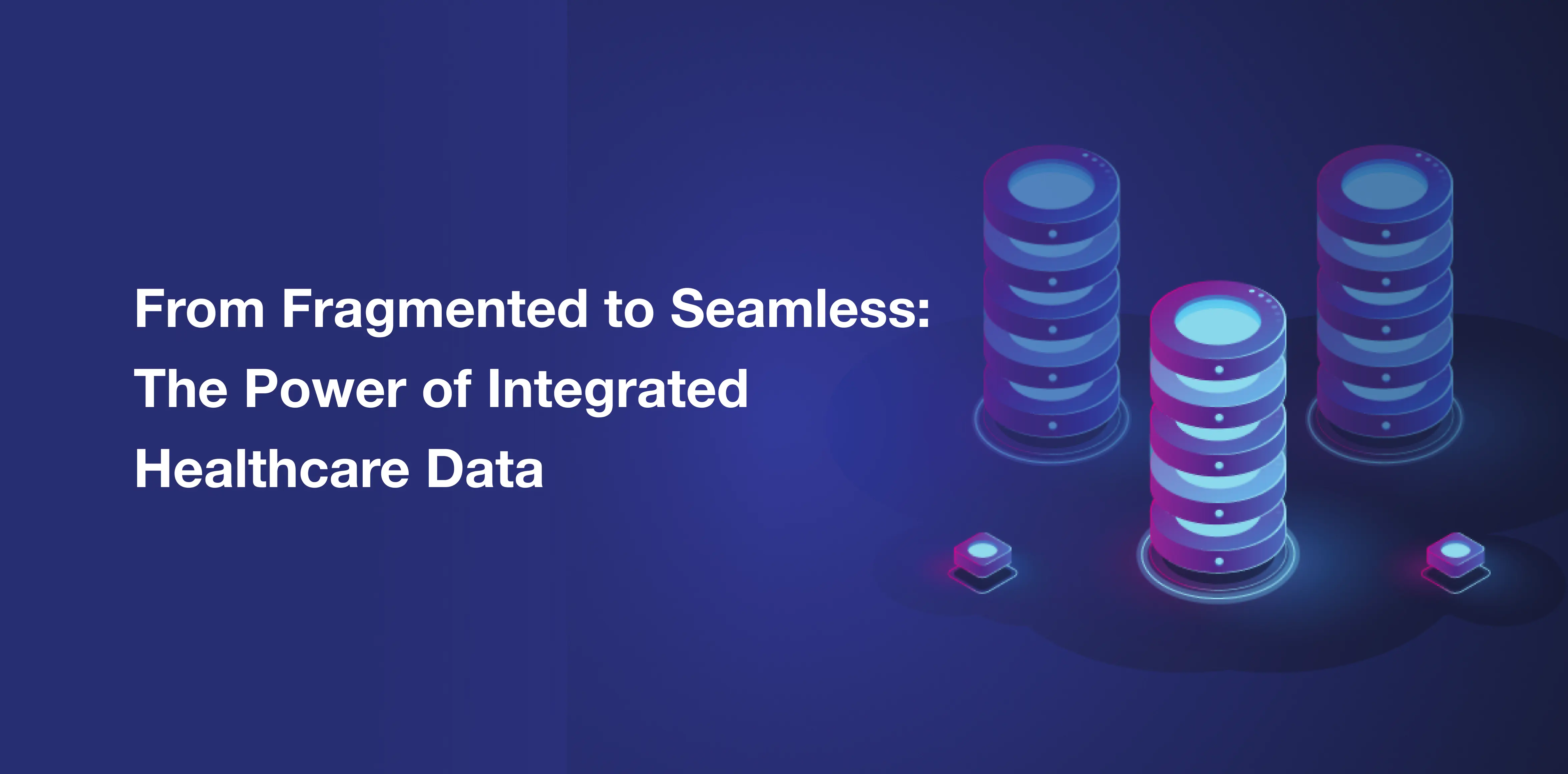
The healthcare data integration market is predicted to grow to USD 43.66 billion by 2034 from USD 23.48 billion in 2025, reflecting a compound annual growth rate (CAGR) of 7.13% during the forecast period. (Market Research Future, 2025)
This market expansion is mainly driven by the widespread adoption of EHR systems and the increasing need for data-driven decision-making across healthcare enterprises. What fuels this growth further is the rise in government regulations aimed at enhancing data interoperability and fostering patient-centered care.
To keep up with these industry developments, healthcare stakeholders—including providers, insurers, pharmacies, and public health agencies—are increasingly leveraging state-of-the-art data integration technologies to reduce operational costs, improve patient outcomes, and streamline processes with their ecosystem.
As the healthcare industry accelerates toward a more interconnected, data-driven future, this blog delves into the opportunities, challenges, and best practices for successful healthcare data integration.
Data Integration in Healthcare
A healthcare enterprise’s ability to deliver quality care relies on it’s capacity to access and make sense of vital healthcare data in real-time. However, this healthcare data resides in silos across multiple systems such as insurance claims, pharmacy systems, electronic health records (EHRs), and consumer portals, creating significant barriers for effective access and analysis.
Data integration eliminates these barriers by unifying data from these disparate sources into a single, unified repository. This provides healthcare enterprises with a comprehensive, 360-degree view of a patient’s/member’s health.
Furthermore, the cleaning, standardization and organization of data undertaken during the integration process ensures that the consolidated data is not just accurate, but also structured for easy extraction of actionable insights. These insights allow enterprises to optimize decision-making, reduce operational costs, and enhance the overall care delivery.
Benefits Of Data Integration In Healthcare
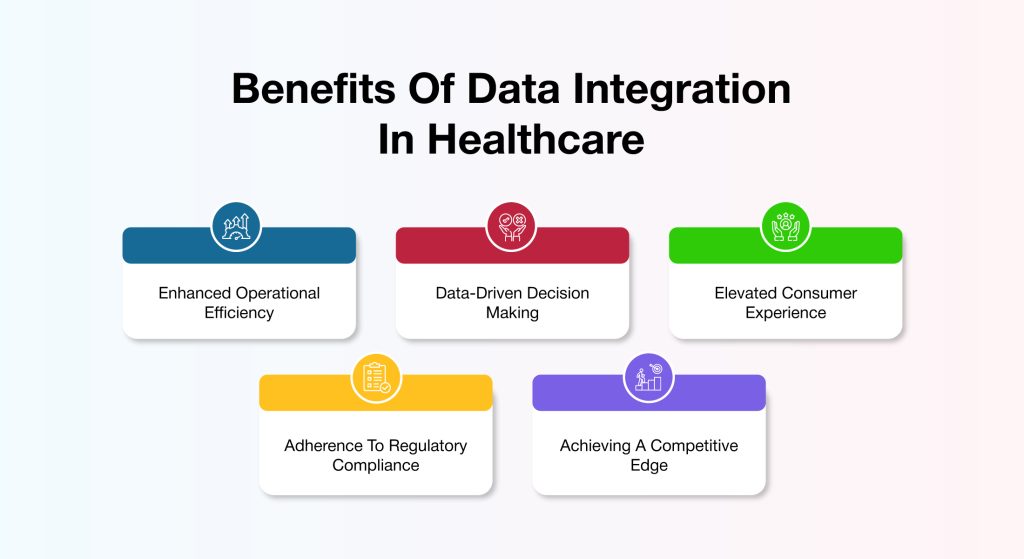
1. Enhanced Operational Efficiency
To ensure effective healthcare delivery, enterprises must manage a variety of high-volume administrative processes, including member enrollment, eligibility verification, prior authorization, claim adjudication, invoicing & billing management, payment processing and so on. Each of these processes relies on pulling large volumes of data from multiple disconnected systems.
By leveraging real-time data integration, healthcare enterprises can consolidate all the vital data into one centralized location. This eliminates the need for manual data entry across different systems, minimizes errors and streamlines administrative workflows across the board.
For example, during the claims adjudication process, the integration platform can cross-reference claims data with coverage details, billing codes, and past medical records – all at a single place. This ensures accurate claim processing, reduces the risk of errors, prevents fraud and accelerates overall claim resolution.
2. Data Driven Decision Making
Predictive analytics is a powerful tool for healthcare enterprises to safeguard their financial stability and drive long-term growth. By integrating data, healthcare enterprises gain a holistic, 360-degree view of member utilization, costs, and health outcomes. This comprehensive visibility equips them with actionable insights into at-risk populations and emerging care needs, allowing for more informed decision-making and proactive care management.
Additionally, the ability to identify care gaps and perform accurate risk scoring enhances the enterprise’s ability to support risk adjustment and drive effective population health initiatives.
3. Elevated Consumer Experience
Today, healthcare consumers expect personalized, seamless, and consistent care delivery from all involved stakeholders, including healthcare providers, pharmacies, TPAs, payers, and more. However, these stakeholders often store consumer data in disconnected, siloed systems, leading to fragmented care experiences and missed opportunities for personalized care.
Data integration addresses this challenge by consolidating consumer data from disparate sources into a centralized, unified profile. This centralized data enables better coordination among healthcare stakeholders, improving the quality and continuity of care throughout the consumer’s journey.
Furthermore, the integration process allows healthcare enterprises to analyze this consolidated data and gain deeper insights into individual consumer preferences and needs. This, in turn, allows them to deliver personalized services and engage with consumers with more precise, targeted communication.
4. Adherence To Regulatory Compliance
The healthcare industry has to follow stringent regulations that mandate the secure storage, management, and sharing of sensitive healthcare data across systems. The Health Insurance Portability and Accountability Act establishes privacy & security standards for patient health information, the CMS and ONC Interoperability laws mandate a secure and standardized data interchange across systems.
Data integration takes an important role in helping healthcare enterprises achieve regulatory compliance by providing a centralized platform for managing and securing sensitive consumer data. Moreover, real-time monitoring and auditing capabilities offered by data integrated platforms helps enterprises prevent unauthorized access and mitigate the risk of data breaches.
5. Achieving A Competitive Edge
The healthcare landscape is becoming increasingly competitive. To stay ahead of industry innovation and navigate competitive pressures, enterprises can harness the power of cutting-edge data integration technologies.
By consolidating data across systems, enterprises can create a strong foundation for adopting emerging technologies like AI, machine learning, and telehealth. This would not only drive improvements in operational efficiency and decision-making but also elevate the consumer experience.
Furthermore, data integration would support scalability, allowing enterprises to manage growing member volumes and adapt to evolving regulatory demands without disrupting workflows.

Key Technologies Driving Successful Healthcare Data Integration
In order to deliver care effectively, a healthcare enterprise needs to access and interpret huge volumes of data. Since this data is stored in silos across multiple disconnected systems, the healthcare enterprise leverages robust data integration technologies to collect, organize, and visualize this information efficiently.
- Extract, Transform, Load (ETL)
ETL is a fundamental process in healthcare data integration. It includes extracting raw data from different sources, transforming it into a standardized, usable format, and then loading it into a central storage system for easy access and analysis.
This process supports both large-scale batch processing and smaller, real-time updates using Change Data Capture (CDC). ETL also plays a key role in data cleansing, quality checks, aggregation, and reconciliation, ensuring that the data remains accurate, reliable, and ready for use in decision-making.
- Enterprise Information Integration (EII)
EII facilitates real-time data access by connecting multiple disparate data sources and providing a unified view. It empowers users to query and analyze data through a simplified interface without the need to manage complex integrations.
The system handles different formats and sources in the background, allowing for seamless, real-time analysis and reporting, all without requiring data to be physically moved between systems.
- Enterprise Data Replication (EDR)
EDR focuses on moving data efficiently. Unlike ETL, it does not transform data but it simply copies complex data from multiple sources and delivers it to target destinations in real-time. This ensures that enterprises are updated with the latest information and data is always available when needed.
- Data Visualization
It is a powerful tool for converting raw data into actionable insights. Modern analytics platforms connect seamlessly with common data sources, enabling users to create intuitive dashboards, reports, and charts. These visualizations make it easier to track key metrics, identify trends, and monitor progress toward objectives.
Data visualization makes business intelligence more accessible and actionable by empowering stakeholders with the insights they need to make informed decisions
Primary Challenges Faced During Integration Of Healthcare Data
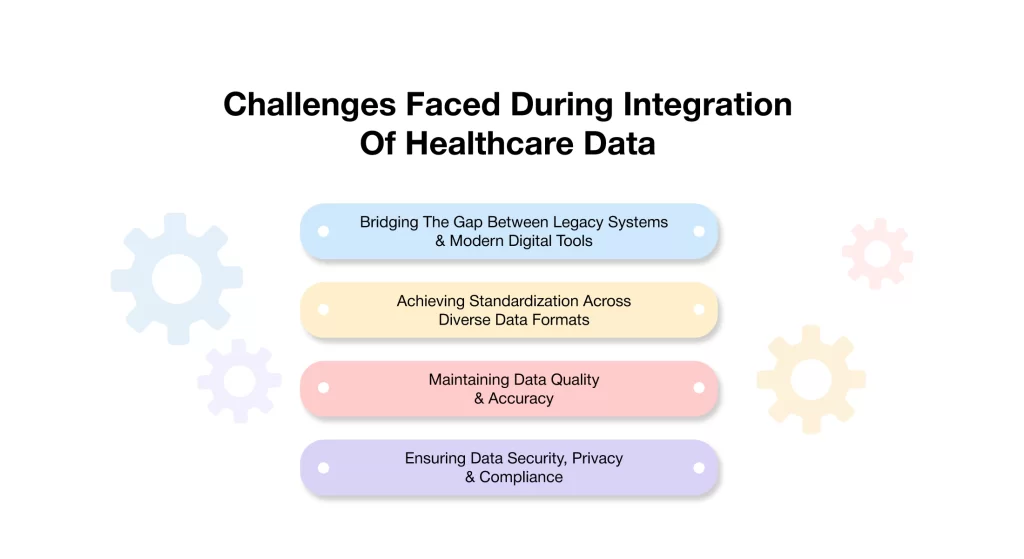
1. Bridging The Gap Between Legacy Systems & Modern Digital Tools
Many healthcare enterprises continue to rely on legacy systems that were not built to meet modern data-sharing requirements. These outdated platforms often lack API support and real-time integration capabilities, making seamless data exchange a challenge.
Thus, integrating these legacy systems with modern healthcare technologies becomes a time-consuming and costly process. It can lead to extended downtime and diminished scalability, limiting an enterprise’s ability to quickly adapt to evolving healthcare models and regulatory requirements.
2. Achieving Standardization Across Diverse Data Formats
Healthcare systems store data in a wide range of formats, such as HL7, CCDA, FHIR, EDI X12, IHE, DICOM, NCPDP, ICD-10, and QRDA, among others. The absence of a standardized data storage approach complicates the integration and harmonization of data from these disparate sources.
This inconsistency can result in system errors, compromised data quality, reduced usability, inaccuracies, and incomplete insights, ultimately hindering effective decision-making.
3. Maintaining Data Quality & Accuracy
Data integration involves consolidating information from various systems, such as insurance claims, electronic health records (EHRs), pharmacy systems, and patient portals. However, discrepancies such as incomplete, outdated, or duplicated data can arise within any of these systems, potentially undermining the overall quality and accuracy of the integrated data.
This compromised data quality can lead to errors in claims adjudication, incorrect eligibility checks, and misinformed decision-making.
4. Ensuring Data Security, Privacy & Compliance
Healthcare data is highly sensitive and subject to strict regulations, like HIPAA (Health Insurance Portability and Accountability Act) and rules protecting PHI (Protected Health Information). When integrating data across various systems, it becomes crucial to implement security measures to safeguard member information and maintain compliance with regulatory frameworks.
Any security lapse during the integration process could expose sensitive data to unauthorized access, risking member privacy and potentially leading to significant legal consequences.
Best Practices For Healthcare Data Integration
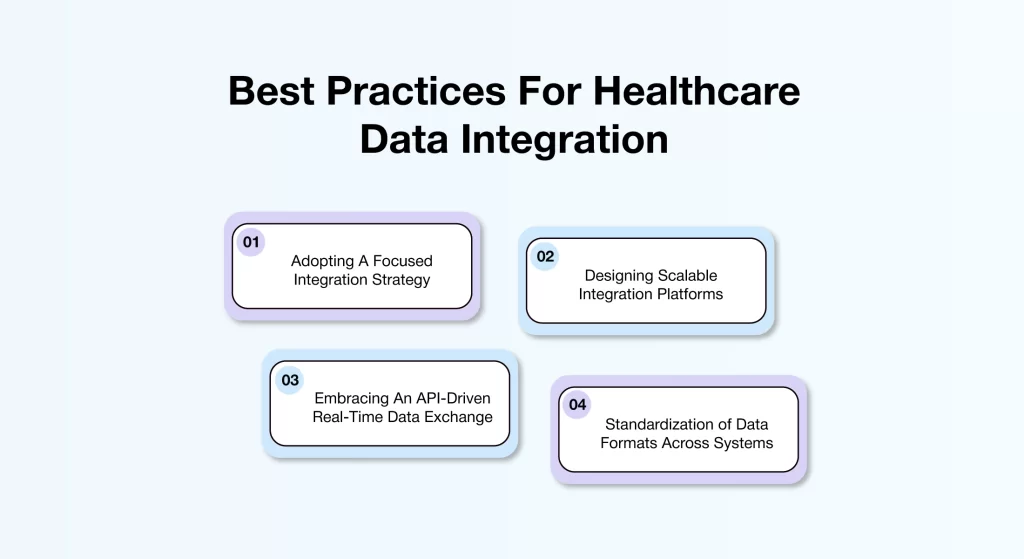
1. Adopting A Focused Integration Strategy
Healthcare enterprises manage large volumes of data, including sensitive member records, insurance claims, lab results, and pharmacy transactions. Before integrating this data, it’s crucial to identify the most valuable information and understand why it matters. Without a well-defined strategy, the integration process can become fragmented and inefficient, undermining its potential to improve decision-making and operational outcomes.
Key questions healthcare enterprises should ask themselves include: Are their current EHR and EMR systems meeting enterprise needs, or do they require improvements? What operational inefficiencies or care gaps are being caused by disconnected data? How is data currently being utilized, and where can integration help drive more informed, effective decision-making?
By addressing these strategic questions, healthcare enterprises can ensure that their data integration efforts align with organizational objectives, regulatory requirements, and the evolving needs of the industry.
2. Embracing An API-Driven Real-Time Data Exchange
Many healthcare enterprises continue to rely on traditional flat files for data exchange because of their simplicity and cost-effectiveness in batch processing. However, these files lack the flexibility required for real-time updates and often necessitate significant transformation to fit structured systems, resulting in delays and inefficiencies.
In contrast, Application Programming Interfaces (APIs) enable seamless, real-time data exchange, ensuring the flow of up-to-date and accurate information across systems. APIs improve interoperability, enhance decision-making, and support automation.
Although implementing APIs requires specialized technical expertise for development, integration, and ongoing maintenance as standards evolve, adopting API-driven data exchange allows healthcare enterprises to boost efficiency, minimize errors, and streamline workflows.
3. Designing Scalable Integration Platforms
As healthcare enterprises expand, their data integration requirements become more complex. A future-proof integration strategy must be flexible enough to incorporate new systems, data sources, and regulatory changes, all while maintaining optimal performance. Scalability is essential to ensure that as data volumes grow, the systems remain efficient, responsive, and capable of handling complex workflows.
Is your current integration platform equipped to scale with rising data demands? If not, partnering with a healthcare technology expert like AVIZVA could be the solution. Our robust and flexible integration solutions ensure seamless data management, allowing enterprises to scale without disruptions and maintain optimal performance.
4. Standardization of Data Formats Across Systems
Healthcare data is stored in diverse formats across multiple systems within the healthcare ecosystem. This inconsistency complicates and slows down the integration process. Without a standardized approach, enterprises need to perform extensive data transformation before they can share and analyze the information. This leads to significant delays in data processing, a higher likelihood of inaccuracies, and increased operational costs.
To overcome these challenges of data inconsistency, healthcare enterprises must adopt industry-standard data formats such as FHIR, HL7, EDI X12, CCDA, NCPDP, and DICOM. This standardization will enable enterprises to streamline data exchange, enhance regulatory compliance, and drive faster, more informed decision-making.
Drive Seamless & Secure Data Integration By Partnering With AVIZVA
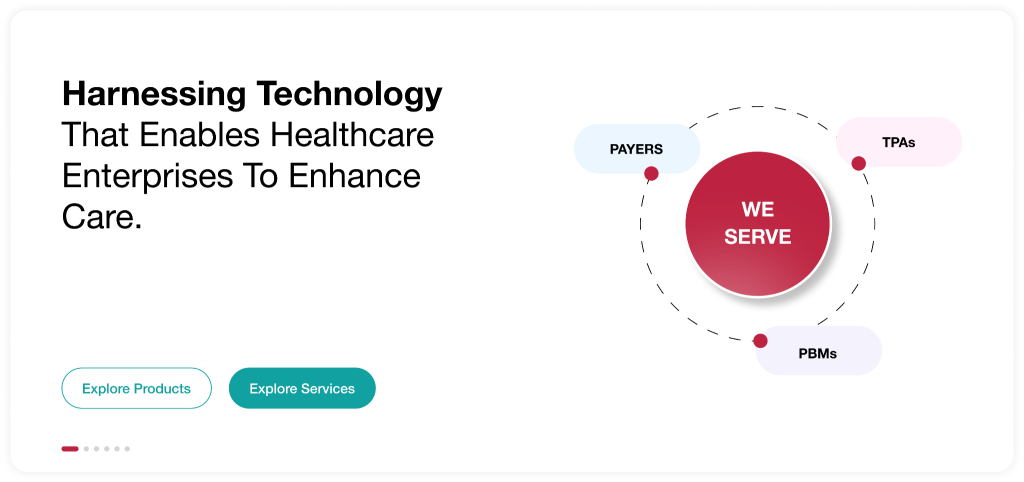
AVIZVA is a healthcare technology company that specializes in empowering Payers, TPAs, and PBMs with seamless, secure and compliant data integration solutions. Built on next-generation robust architecture, AVIZVA’s integration solutions are designed to manage all types of healthcare data—including claims, eligibility, benefits, accumulators, and prior authorizations—across diverse healthcare data formats such as HL7, CCDA, FHIR, EDI X12, IHE, DICOM, NCPDP, ICD-10, and QRDA.
Here’s why you should partner with AVIZVA to meet your data integration needs :

- Deep-Rooted Expertise
With more than 14 years of industry experience, AVIZVA has delivered over 150 custom-built solutions for Health Plans, PBMs, and TPAs. Their engineering expertise spans designing and developing self-service experience products for consumers, managing data integration across external parties and internal systems, building innovative, industry-first products such as an in-flight drug pricing arbitrage engine, and so on.
- Accelerated Development
Our Pre-built Platform Engineering Accelerators, that span across Technology Practices such as Frontend, Backend, Database, DevOps & Test Engineering – power a high speed creation of Sophisticated Enterprise Applications.
- Impeccable Quality
We have embraced the Power Of AI to adopt a “Test + Design” driver Development Approach to eliminate lags & ensure automated execution of quality checks across Code, Functionality. Security & Performance.
- Impenetrable Security
All our applications are Secure-by-Design, with integrated processes, practices, tools & controls that cover all aspects of security. We run independent checks for security measures by leading auditing experts.
- Predictable Delivery
We have built standardized Project Backlogs to streamline the planning & tracking go large-scale implementations. These live & updated backlogs drive significant automation headways across the sprint cycle.
Conclusion
To stay ahead in the increasingly data-driven healthcare landscape, enterprises must embrace future-looking data integration solutions. These solutions enable healthcare enterprises to streamline operations, enhance care coordination, and drive better health outcomes.
Successful integration relies on a focused strategy that includes embracing an API-driven approach for seamless data exchange, designing scalable platforms, and standardizing data across systems. Additionally, training internal teams on data integration best practices ensures a smooth and effective implementation, further driving success.
As healthcare enterprises embrace digital transformation, the ones that prioritize robust data integration strategies will lead the way. Thus, the future truly belongs to enterprises that put the right data in the right hands at the right time.
At AVIZVA, we specialize in building intelligent and easy-to-plug data integration solutions. Are you a healthcare enterprise who is navigating data connectivity challenges? Get in touch with AVIZVA now!
Get in touch with AVIZVA now!

